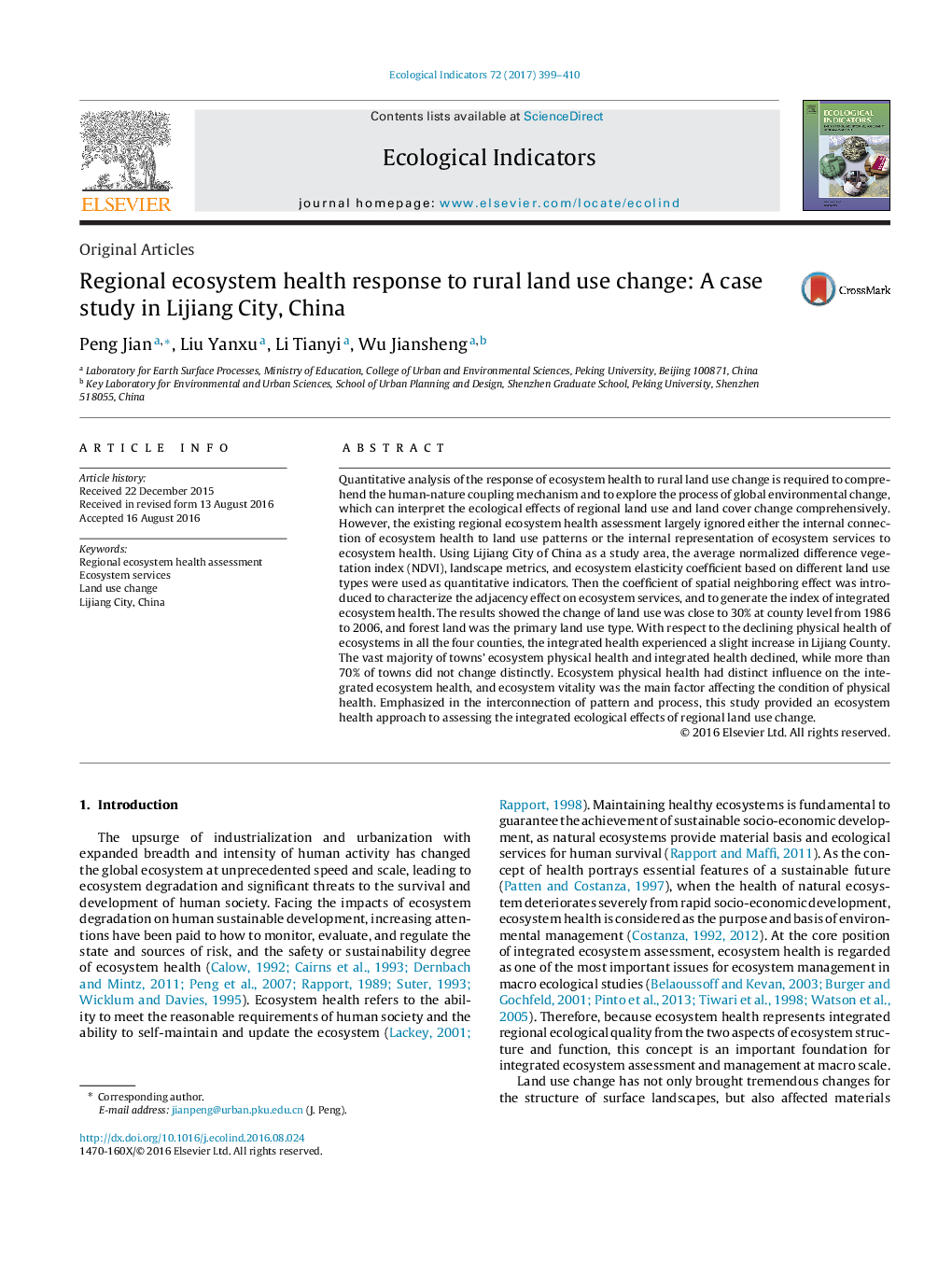| Article ID | Journal | Published Year | Pages | File Type |
|---|---|---|---|---|
| 6292787 | Ecological Indicators | 2017 | 12 Pages |
Abstract
Quantitative analysis of the response of ecosystem health to rural land use change is required to comprehend the human-nature coupling mechanism and to explore the process of global environmental change, which can interpret the ecological effects of regional land use and land cover change comprehensively. However, the existing regional ecosystem health assessment largely ignored either the internal connection of ecosystem health to land use patterns or the internal representation of ecosystem services to ecosystem health. Using Lijiang City of China as a study area, the average normalized difference vegetation index (NDVI), landscape metrics, and ecosystem elasticity coefficient based on different land use types were used as quantitative indicators. Then the coefficient of spatial neighboring effect was introduced to characterize the adjacency effect on ecosystem services, and to generate the index of integrated ecosystem health. The results showed the change of land use was close to 30% at county level from 1986 to 2006, and forest land was the primary land use type. With respect to the declining physical health of ecosystems in all the four counties, the integrated health experienced a slight increase in Lijiang County. The vast majority of towns' ecosystem physical health and integrated health declined, while more than 70% of towns did not change distinctly. Ecosystem physical health had distinct influence on the integrated ecosystem health, and ecosystem vitality was the main factor affecting the condition of physical health. Emphasized in the interconnection of pattern and process, this study provided an ecosystem health approach to assessing the integrated ecological effects of regional land use change.
Keywords
Related Topics
Life Sciences
Agricultural and Biological Sciences
Ecology, Evolution, Behavior and Systematics
Authors
Peng Jian, Liu Yanxu, Li Tianyi, Wu Jiansheng,
